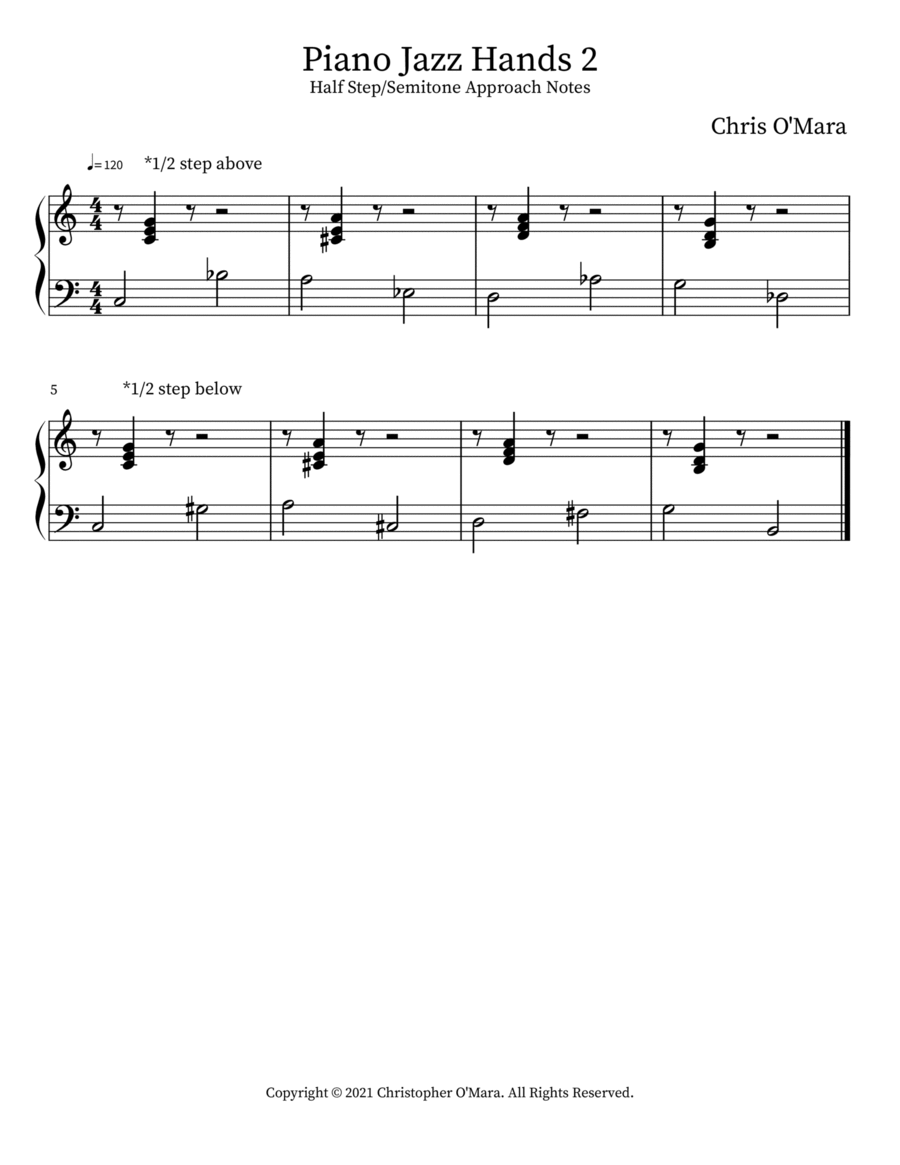Instrumental Solo,Piano and Keyboard - Level 3 - Interactive Download SKU: A0.480815 Composed by Chris O'Mara. This edition: Interactive Download. Blues,Christmas,Classical,Contest,Film/TV,Hip-Hop,Holiday,Jazz,Latin,Musical/Show,Opera,Pop,Praise & Worship,Standards,World. Individual part. 1 pages. Duration 16. Comaramusic #7hfl2fPln4YdqOBeLfPz4T. Published by comaramusic (A0.480815). Key: C major.Practice bass movement with this study on half step approach notes. Check out my other scores here on noteflight.com Contact me at comaramusic@gmail.com for custom compositions, arrangements and lessons on seven instruments, songwriting & music theory. Thank You!
